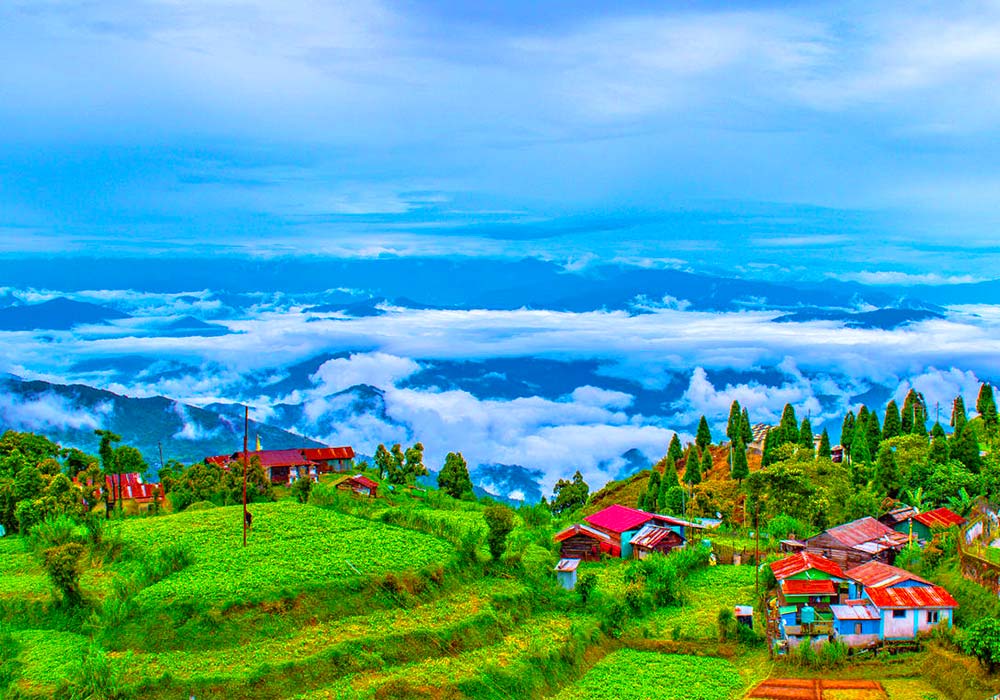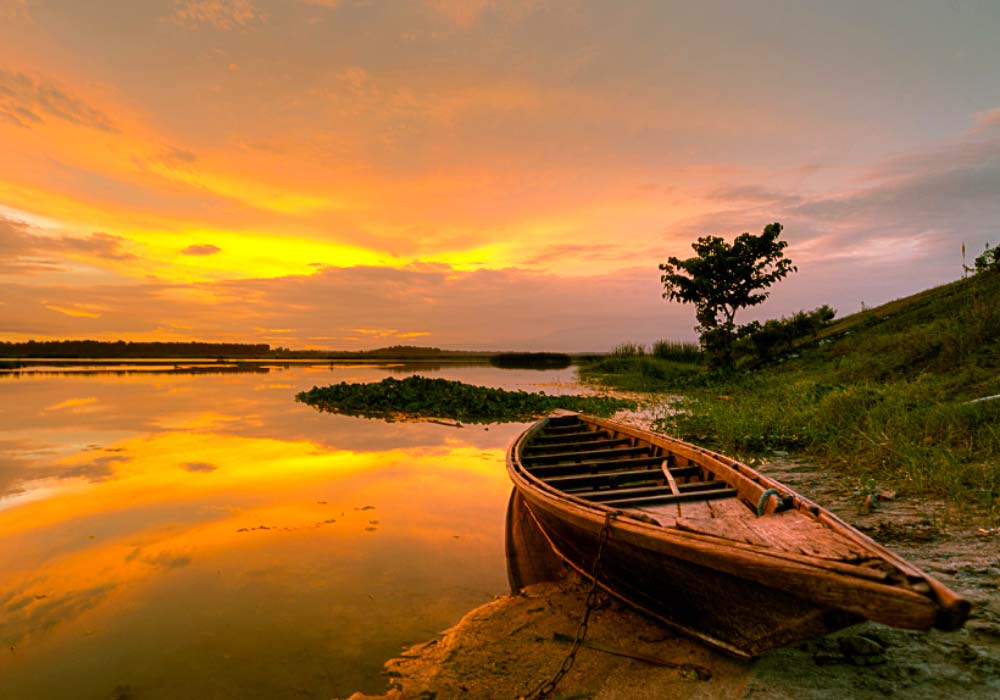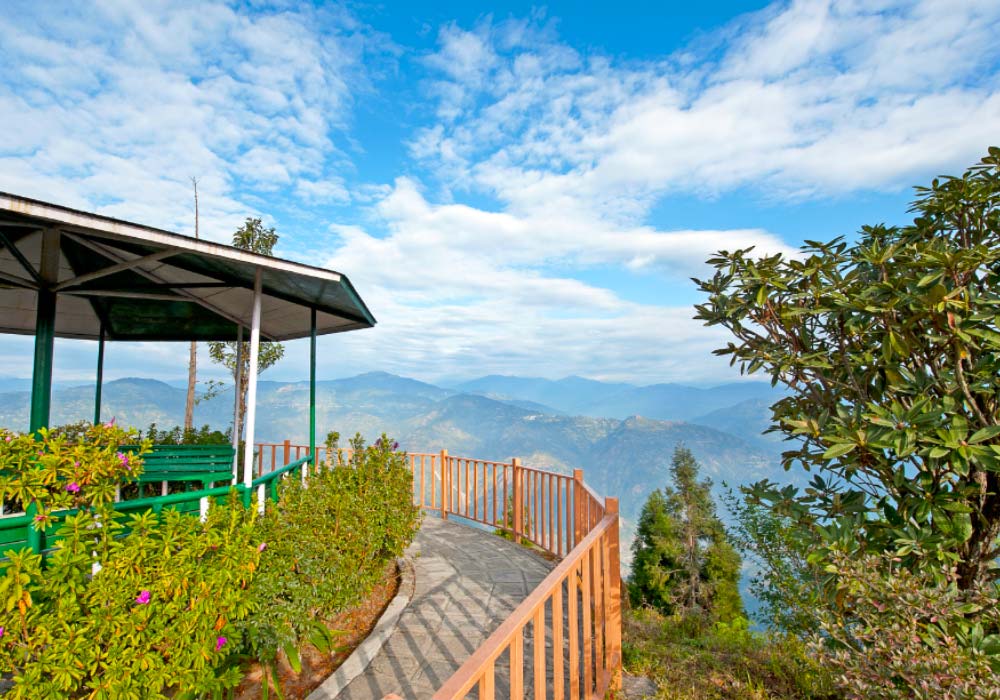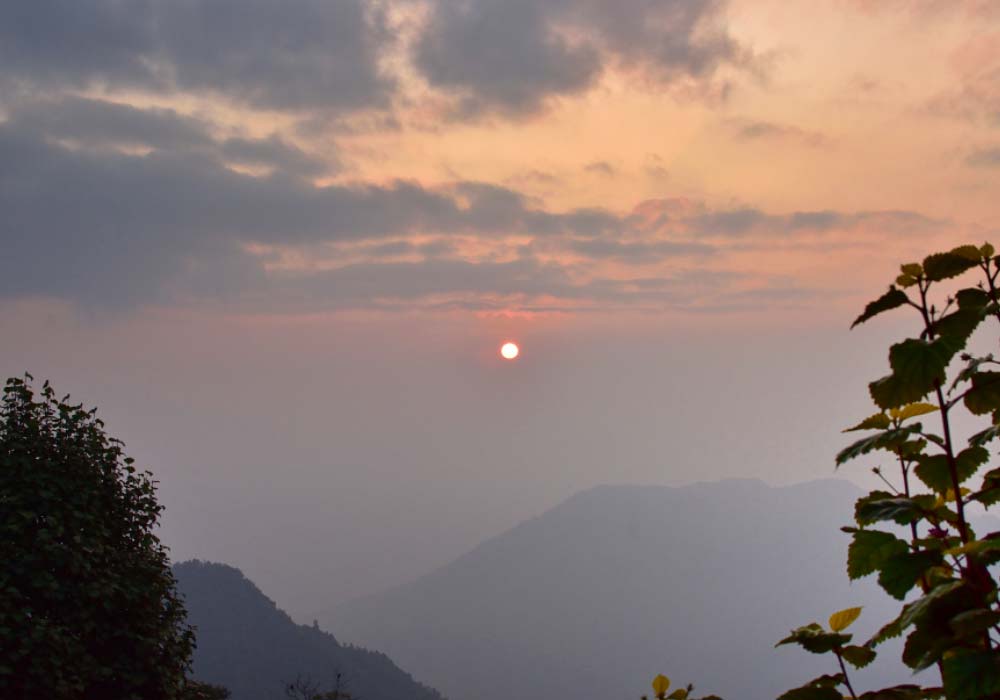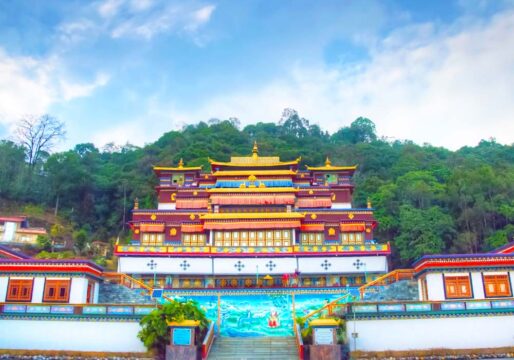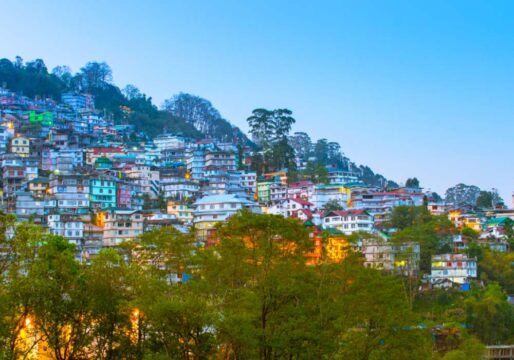Over the ages, Gujarat has seen a succession of races-settlers as well as conquerors-and amalgamated their cultures into its own. The result has been a wonderful fusion of new ideas and old world traditions. Rich in crafts, history and natural beauty, this home state of Mahatma Gandhi continues to attract artists, scholars, intellectuals and businessmen from the world over.
Situated on the western coast of the Indian Peninsula, the history of the state goes back to 200 BC. The state is bound by the Arabian Sea on the west, Pakistan and Rajasthan in the north and northeast, Madhya Pradesh in the southeast and Maharashtra in the south.
On the basis of physiology and culture, Gujarat can be divided into several regions like Kutch, Saurashtra, Kathiawad, and Northeast Gujarat.
Kutch is situated on the northwestern border of the state bordering Pakistan with a maximum altitude of 300 meters and almost desert-like topography. The ridge of Jurassic sandstone in the central part of the region breaks into the landscape at several places. In the north is Rann of Kutch, a salt marsh and in the south is Little Rann of Kutch.
Between Saurashtra and Khambhat is Kathiawad with a maximum altitude of 180 meters and if is flanked by sandstones in the north. It is a region made up of Deccan lavas and cut across by the lava dykes.
The Central Kutch region extends to Northeast Gujarat and the region has low hills and small plains. Southeast Gujarat is an extension of the Western Ghats and receives the highest rain in the state.
Situated on the western coast of India, the name of the state is derived from Gujjaratta, which means the land of the Gujjars. It is believed that a tribe of Gujjars migrated to India around the 5th century AD. The real cultural history of these people, however, is believed to have begun much earlier. Many Indus Valley and Harappan centers have been discovered in the state like Lothal, Dholavira, Rangpur, Lakhabaval, Amri, and Rozdi and established the earliest known history of Gujarat to around 3000 BC to 2200 BC. At that point of time, Lothal was the main port of this civilization. With the advent of the Yadava tribe led by Lord Krishna, some 3,500 years ago, came the glorious days for Gujarat. It was followed by 100 years of Lord Krishna’s rule.
It is believed that Ashoka, the Mauryan king extended his kingdom to Gujarat. The fall of the Maurya Empire led the small kingdoms to establish their power in this state from time to time. The state achieved a high level of prosperity during the time of Solankis from the 9th century. In the 12th century AD, Allauddin Khilji, the Sultan of Delhi defeated the Waghela king of Gujarat and a long era of Muslim rule over Gujarat started. The Marathas ended the Muslim rule in the 18th century only to be handed over to the British in the early 19th century. Surat was the center of the first factory of the East India Company in India and after the First War of Independence in 1857, the region came under the British monarchy along with the rest of the country.
Gujarat was a part of the erstwhile Mumbai state till 1960, when the people of Gujarat decided to have their own state on the basis of their distinct language and culture. This led to formation of the two new states of Gujarat and Maharashtra.
Navratri, literally nine nights, is celebrated for the 10 days preceding the festival of Dussehra-usually in October. The most eagerly awaited festival of the year, which celebrates harvest time, Navratri is an occasion when both rural and urban Gujaratis worship the nine incarnations of the Mother Goddess, Shakti, denoting cosmic energy.
Closely following Dussehra is the famous festival of lights, Diwali, which also has its genesis from the same epic-Ramayana. Interestingly, it is the only Hindu celebration which falls on Amavasya, a moon-less night in the lunar calendar.
Celebrated on January 14, the festival of Makar Sankranti heralds the kite-flying season and the International Kite Festival is held in Ahmedabad on that day every year.
Celebrated as the birthday of Lord Krishna, Janmashtami usually falls in the months of July/August and is celebrated with great fervor in Gujarat. Tableaux showing scenes from Lord Krishna’s life are modeled and displayed in homes and temples. The most common of these depicts Krishna as a babe in the cradle.
The small hamlet of Tarnetar, about 75 kilometers from Rajkot, is the site for one of Gujarat’s most well known annual fairs, held here during the first week of Bhadrapad (September-October). This three day long fair is primarily a ‘marriage mart’, called swayamwar, where gaily attired young men, in their traditional attire, come to be chosen by village belles dressed in colorful finery.
Other festivals of Gujarat include the Bhavnath fair, Dang Darbar, Saputara Summer Festival, and Madhavrai fair. The Rann Utsav, the celebration of the unique Rann landscape, its heritage and culture is a festival that lasts for 4 months, almost from November to February.
Gujarat has a tropical climate with hot summers and cold winters. The summer months are from April to June with temperatures ranging from 27ºC to 42ºC. Winters are better with a temperature variance of 14ºC to 29ºC. Monsoon touches the state in June and remain here till September.
BY AIR – Gujarat has 10 domestic airports apart from an international airport at Ahmedabad. Most of the domestic airlines operate out of Ahmedabad connecting it to rest of the country.
BY RAIL – Gujarat has a good railway network that not only connects the state internally but connects the state to other places in India also.
Ahmedabad, the city of Ahmed Shah (the medieval ruler of Gujarat), is known for its rich past and its association with Mahatma Gandhi. The city offers the traveler a unique style of architecture, which is a blend of Hindu and Islamic styles (Indo-Saracenic style of architecture). The monuments of Ahmedabad mainly date back to the 15th century. Ahmedabad has been known for its industry since medieval times. Presently it is famous for its textile mills and is often referred to as the ‘Manchester of the East’.
Gandhinagar, situated about 25 kilometers north of Ahmedabad, is the newly built capital of Gujarat. Gandhinagar, named after Mahatma Gandhi, has been built on a grid pattern. The presence of abundant foliage here has earned it the title of the ‘Green Capital’.
Jamnagar is situated in the Saurashtra region of Gujarat around 302 km from Ahmedabad. Major sites here include the Lakhota Fort, Kotha Bastion, Willington Crescent, Solarium, Jamsaheb’s Palace, and Rozi and Bedi ports.
Patan lies further north of Jamnagar, founded during the 9th century. Originally known as Anhilwad Patan, the city is famous for its architectural wonders built during the rule of the Solanki dynasty. The Rani Udayamati vav (step well) and the Sahastralinga Lake are some of the tourist attractions here.
To the south of Ahmedabad lies the city of Vadodara, Gujarat’s cultural capital, which has a long tradition of music, fine arts and education. The credit for this cultural awareness goes to Maharaja Sayaji Rao Gaikwad who made primary education mandatory for both boys and girls and encouraged artistes.
A favorite hill resort for the people of Vadodara, Pavagadh is believed by many to be the chunk of the Himalayas that was to be carried by Hanuman to Lanka.
Lying at the base of the Pavagadh hill is Champaner, the ancient capital of Sultan Mahmud Beghara. The Jama Masjid here is considered to be one of the finest in the State.
Further south of Vadodara lies the important trading center and port of ancient India called Surat. Today, Surat is an important center for textiles, zari (gold and silver threadwork) and diamond cutting and polishing.
Saputara-literally, the Abode of Serpents-is Gujarat’s best-known hill resort, situated atop the second highest plateau in the Sahyadri range and in the midst of thick forests.
Founded by a Rajput chief in the 16th century, Rajkot had been the scene of many a clash between the Mughals and the British. Located in the center of the peninsula further northwest of Surat, the city is mainly known for the handicrafts it produces. Especially famous are its bead and mirror work, tie and dye (bandhani), silk embroidery and appliqué work.
To the southeast of Rajkot is the city of Bhavnagar, originally the capital of a state of the same name and ruled by the Suryavanshi Rajputs from Marwar. The prime attraction here is a Mahadev Temple.
To the west of Bhavnagar, situated at the base of the Girnar Hills is Junagadh. Its special claim to fame is the rock edict of Emperor Ashoka, dating back to 250 BC.
One of the biggest attractions about five kilometers from Junagadh is Uperkot. The fort atop the Uperkot hill, originally constructed by the Rajputs, has an ornamented triple gateway. Equally fascinating are the Buddhist caves and stupa all dating back to 100-700 AD.
Further west of Junagadh, situated along the coast is Porbandar-the birthplace of Mahatma Gandhi.
Known popularly as the gateway to Kutch, Bhuj is the most important town in this region. An old walled city, the gates of which (in olden times) were locked from dusk to dawn, it encloses within itself not only the palace but also the entire bazaar and a lake too.
Situated in Junagadh, near the port town of Veraval, Somnath is probably one of the best-known pilgrimage centers of Gujarat.
Yet another pilgrimage for which this state is known, is the holy town of Dwarka lying on the northern tip of the Saurashtra peninsula, at the confluence of the Gomti River and the Arabian Sea.
One of the most sacred pilgrimage centers for the Jain community, situated in Junagadh district, are the 16 marble temples atop the 1,118-meter high Mount Girnar.
The architectural grandeur of many of the 863 Jain temples at Palitana has few parallels. Located on the 600 meter high Shatrujaya Hill, this cluster of temples, dedicated to various Jain saints and deities, is yet another important place of pilgrimage on the Jain circuit.

